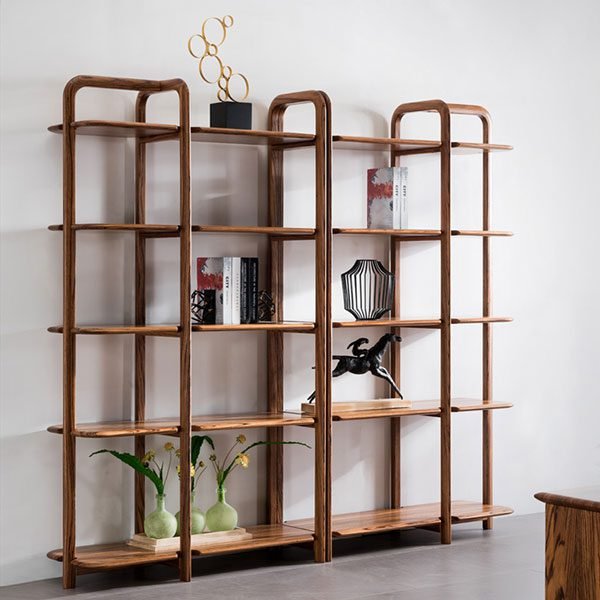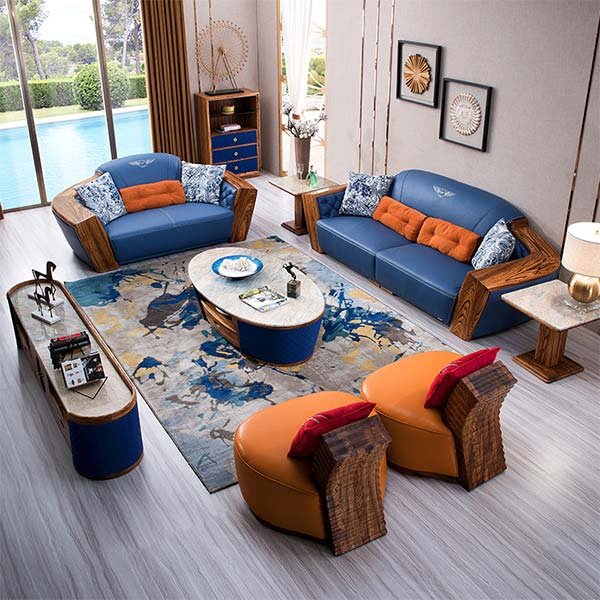The Rise of Minimalist Designs in Modern Furniture
The world of furniture design is constantly evolving, with new trends and styles emerging each year. One of the most prominent trends in modern furniture is the rise of minimalist designs. Minimalism is a design philosophy that focuses on simplicity, functionality, and clean lines. It is all about stripping away unnecessary elements and creating a sense of calm and tranquility in a space.
In recent years, minimalist designs have become increasingly popular in modern furniture. People are drawn to the clean and uncluttered look that minimalist furniture provides. This style is perfect for those who want to create a sense of openness and spaciousness in their homes. Minimalist furniture often features sleek and simple lines, with a focus on functionality rather than ornate details.
One of the key features of minimalist furniture is its simplicity. Minimalist designs often use neutral colors such as white, black, and gray, which create a sense of calm and serenity. These colors also allow the furniture to blend seamlessly with any existing decor, making it a versatile choice for any home. Additionally, minimalist furniture tends to have a streamlined and uncluttered appearance, with clean lines and minimal embellishments.
Another important aspect of minimalist furniture is its focus on functionality. Minimalist designs prioritize practicality and usability, with furniture pieces that serve a purpose without unnecessary frills. For example, minimalist sofas often have clean lines and simple shapes, with no excessive cushions or decorative elements. This allows the furniture to be both aesthetically pleasing and functional, providing a comfortable seating option without overwhelming the space.
In addition to simplicity and functionality, minimalist furniture also promotes a sense of calm and tranquility. The clean lines and uncluttered appearance of minimalist designs create a peaceful and serene atmosphere in a room. This is particularly beneficial in today’s fast-paced and hectic world, where people are constantly bombarded with stimuli. Minimalist furniture provides a respite from the chaos, allowing individuals to relax and unwind in a tranquil environment.
Furthermore, minimalist furniture is not only aesthetically pleasing but also environmentally friendly. The focus on simplicity and functionality means that minimalist designs often use fewer materials and resources. This reduces waste and promotes sustainability, making minimalist furniture a responsible choice for those who are conscious of their environmental impact.
In conclusion, the rise of minimalist designs in modern furniture is a testament to the enduring appeal of simplicity and functionality. This trend has gained popularity in recent years due to its clean and uncluttered look, versatility, and ability to create a sense of calm and tranquility. Minimalist furniture is not only aesthetically pleasing but also environmentally friendly, making it a popular choice for those who value both style and sustainability. Whether you are looking to create a minimalist-inspired space or simply want to incorporate some minimalist elements into your existing decor, this trend is sure to bring a touch of contemporary elegance to your home.
Exploring the Use of Sustainable Materials in Contemporary Furniture
In recent years, there has been a growing interest in sustainable living and environmentally friendly practices. This trend has extended to the world of furniture design, with more and more people seeking out pieces that are not only stylish and functional but also made from sustainable materials. In this article, we will explore the use of sustainable materials in contemporary furniture and how this trend is shaping the industry.
One of the most popular sustainable materials used in contemporary furniture is reclaimed wood. Reclaimed wood is sourced from old buildings, barns, and other structures that are no longer in use. By repurposing this wood, furniture designers are able to give it a new lease on life, reducing the demand for new timber and minimizing waste. Reclaimed wood has a unique character and charm that cannot be replicated, making it a popular choice for those looking to add a touch of rustic elegance to their homes.
Another sustainable material that is gaining popularity in contemporary furniture design is bamboo. Bamboo is a fast-growing grass that can be harvested in just a few years, making it a highly renewable resource. It is also incredibly strong and durable, making it an ideal material for furniture. Bamboo furniture is not only eco-friendly but also stylish, with its natural grain and warm tones adding a touch of sophistication to any space.
In addition to reclaimed wood and bamboo, designers are also exploring the use of recycled materials in their furniture creations. This includes everything from recycled plastic to repurposed metal. By giving new life to materials that would otherwise end up in landfills, designers are able to create unique and environmentally friendly pieces that are both functional and aesthetically pleasing.
The use of sustainable materials in contemporary furniture is not only beneficial for the environment but also for the health of those who use these pieces. Many traditional furniture materials, such as particleboard and synthetic fabrics, contain harmful chemicals that can off-gas and contribute to poor indoor air quality. By opting for furniture made from sustainable materials, consumers can reduce their exposure to these toxins and create a healthier living environment for themselves and their families.
The trend towards sustainable furniture is not limited to residential spaces. Many businesses and commercial spaces are also embracing this movement, recognizing the importance of sustainability in their design choices. From eco-friendly office chairs to recycled plastic outdoor furniture, there are now a wide variety of sustainable options available for businesses looking to create a more environmentally conscious workspace.
As the demand for sustainable furniture continues to grow, so too does the innovation in materials and design. Designers are constantly pushing the boundaries of what is possible, experimenting with new materials and techniques to create furniture that is not only sustainable but also visually stunning. This commitment to both style and sustainability is transforming the furniture industry, offering consumers a wide range of options that align with their values and aesthetic preferences.
In conclusion, the use of sustainable materials in contemporary furniture is a trend that is here to stay. From reclaimed wood to bamboo and recycled materials, designers are finding creative ways to incorporate eco-friendly materials into their creations. This not only benefits the environment but also provides consumers with stylish and functional furniture options that are both beautiful and sustainable. As more people become aware of the impact their choices have on the planet, the demand for sustainable furniture will only continue to grow, driving further innovation in the industry.
Innovative Technology Integration in Modern Furniture Designs
Innovative Technology Integration in Modern Furniture Designs
In today’s fast-paced world, technology has become an integral part of our lives. From smartphones to smart homes, it seems that everything is becoming smarter and more connected. This trend has also made its way into the world of furniture design, where innovative technology integration is revolutionizing the way we interact with our living spaces.
One of the most exciting developments in modern furniture design is the integration of wireless charging technology. Gone are the days of searching for an outlet or untangling a mess of cords. With wireless charging, you can simply place your phone or other electronic devices on a designated spot on your furniture, and they will charge effortlessly. This not only eliminates the need for unsightly cords but also adds a level of convenience and functionality to your furniture.
Another area where technology is making its mark in modern furniture design is in the realm of adjustable and customizable features. With the use of sensors and smart technology, furniture can now adapt to your needs and preferences. Imagine a sofa that adjusts its firmness based on your body temperature or a desk that automatically adjusts its height to accommodate your preferred working position. These innovative features not only enhance comfort but also promote a healthier and more ergonomic lifestyle.
Smart home integration is another exciting trend in modern furniture design. With the rise of voice-controlled assistants like Amazon Alexa and Google Home, furniture can now be seamlessly integrated into your smart home ecosystem. Imagine controlling your lighting, temperature, and even your furniture with simple voice commands. This level of integration not only adds a touch of luxury but also enhances the overall functionality and convenience of your living space.
In addition to these technological advancements, modern furniture design is also embracing sustainability and eco-friendly practices. With the growing concern for the environment, designers are incorporating sustainable materials and manufacturing processes into their creations. From furniture made from recycled materials to pieces that are designed to be easily disassembled and recycled, the focus is on reducing waste and minimizing the carbon footprint of furniture production.
Furthermore, technology is also being used to create furniture that is not only aesthetically pleasing but also environmentally friendly. For example, 3D printing technology allows designers to create intricate and unique furniture pieces using sustainable materials. This not only reduces waste but also allows for greater design flexibility and customization.
In conclusion, innovative technology integration is transforming the world of modern furniture design. From wireless charging capabilities to adjustable features and smart home integration, technology is enhancing the functionality and convenience of our living spaces. Additionally, the focus on sustainability and eco-friendly practices is driving the use of recycled materials and 3D printing technology. As we continue to embrace the digital age, it is clear that technology will play a significant role in shaping the future of furniture design, bringing contemporary elegance to our homes.
Conclusion
In conclusion, the modern furniture trends of contemporary elegance have been unveiled. These trends showcase sleek and minimalist designs, with a focus on clean lines and functionality. The use of high-quality materials and innovative techniques adds a touch of luxury to these furniture pieces. Additionally, the incorporation of bold colors and unique shapes adds a sense of individuality and style. Overall, these trends reflect a desire for simplicity, sophistication, and timeless appeal in modern furniture design.



